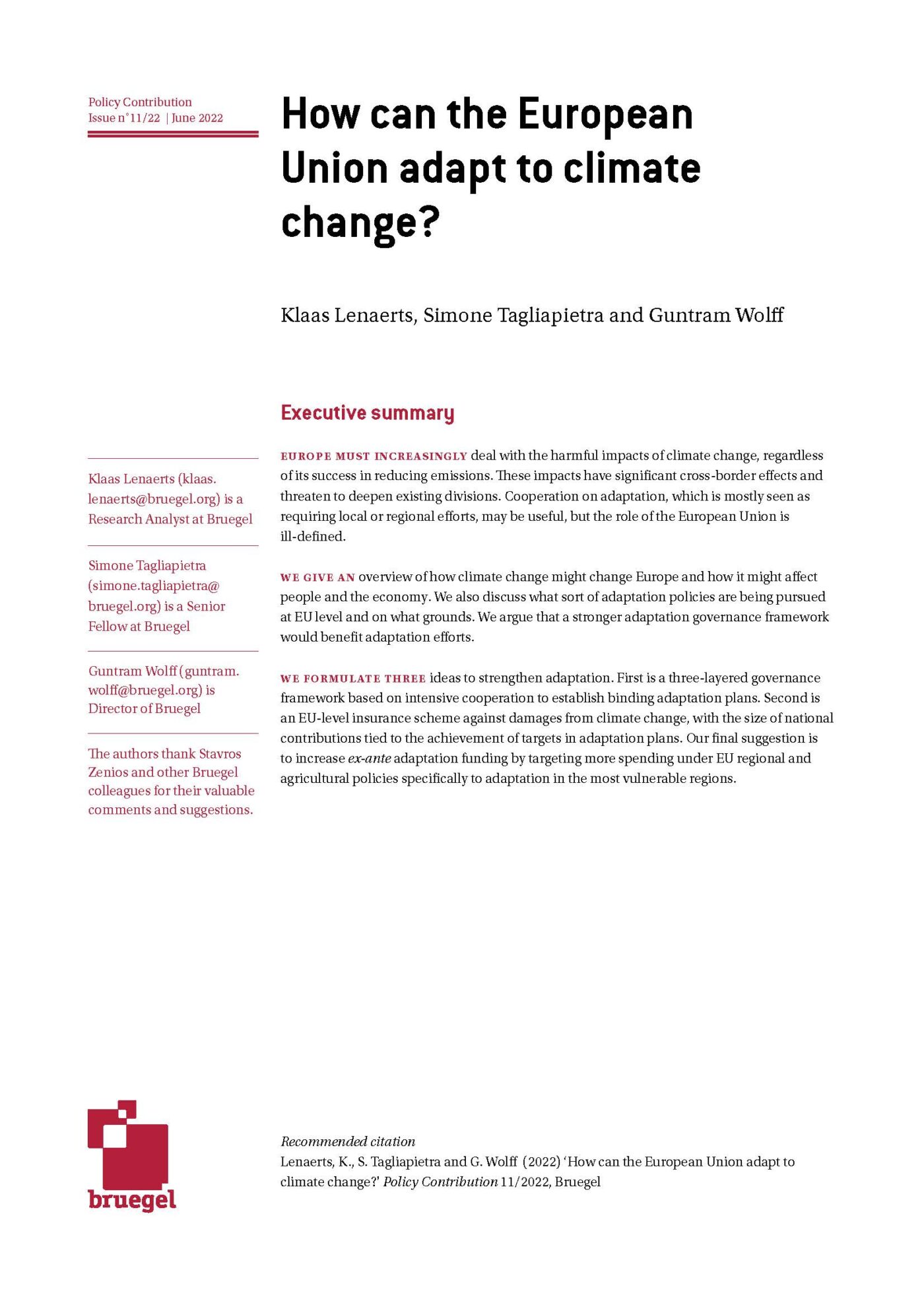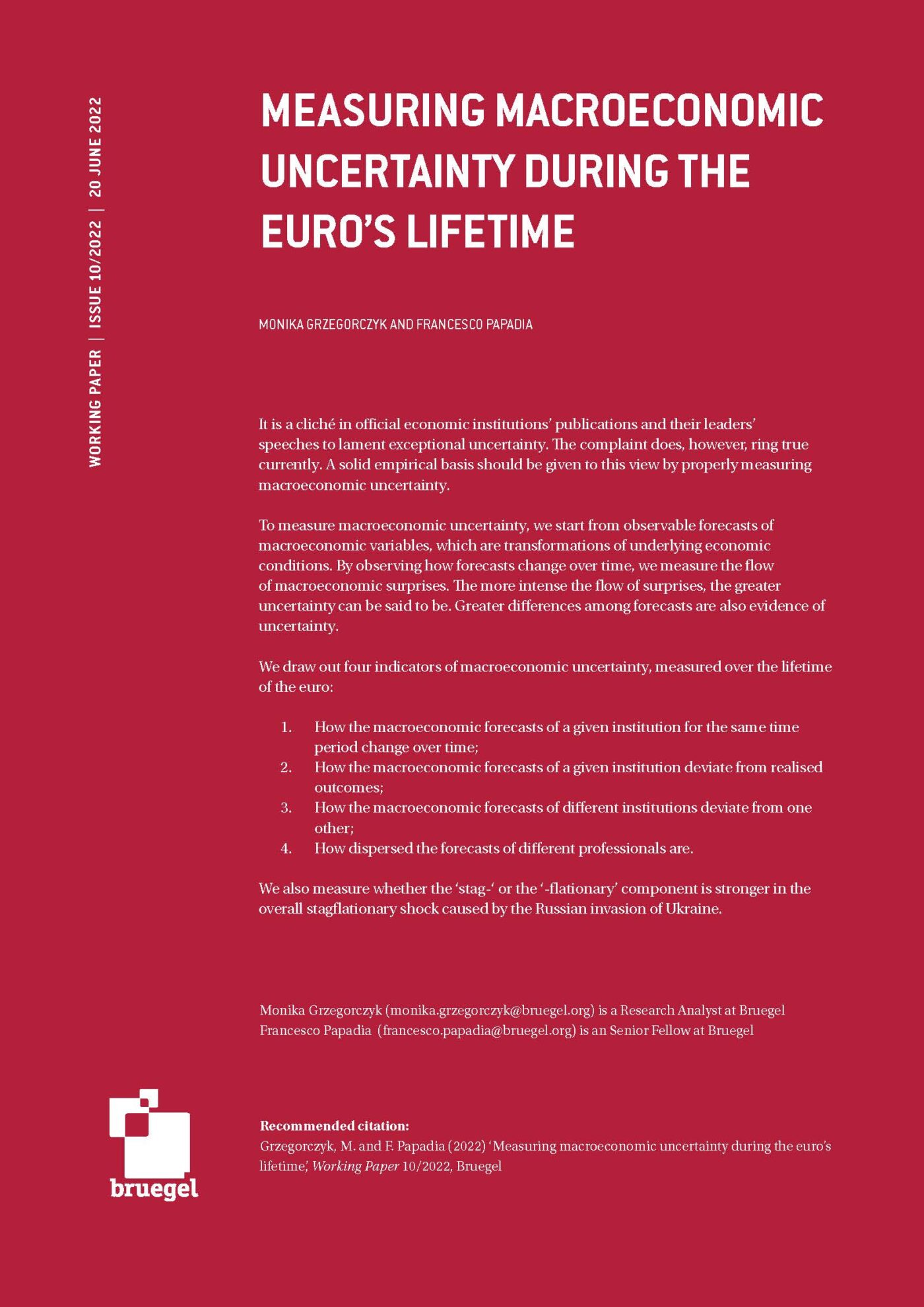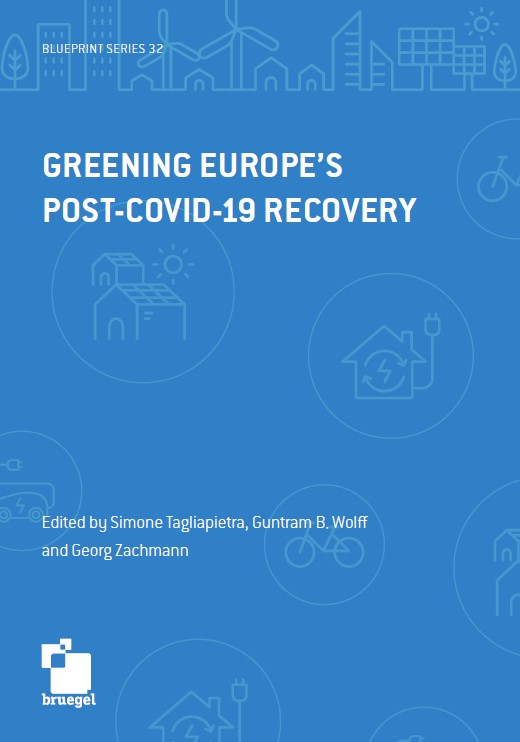Blog Post
Climate risks to European banks: a new era of stress tests
Several European central banks have begun assessing the impact of adverse climate scenarios on banks’ capital. Comparable work at EU or euro area level has evolved more slowly. Supervisors need build up a distinct and more complex type of analysis, and should engage with banks now.
The release of a proposed methodology for assessing climate risks within UK banks and insurers by the Bank of England just before Christmas has fuelled calls for a similar ‘climate stress test’ for European banks.
That climate risks should be a significant concern for financial supervisors is no longer in doubt. The central bank Network for Greening the Financial system (‘NGFS’, consisting of now 54 institutions) last year already called for climate-related risks to be integrated into standard financial stability monitoring and supervision. The French and Dutch central banks have conducted quantitative top-down studies and found a substantial potential risk. In the case of the Dutch study, a disruptive climate scenario was shown to reduce insurance sector portfolio values by up to 11 per cent, and banks’ core equity ratio by about 4 percentage points.
Well-defined shocks in the EU stress tests
Stress tests have become the main tool to assess the impact of external shocks on the EU banking system. They are still a relatively new instrument, first used across the EU in 2011, and most publicly in the comprehensive assessment ahead of the ECB taking on its new responsibilities in 2014.
Unlike the US, the EU adopted a bottom-up approach. From the start, banks were given much greater discretion in using their internal models in simulating the impact of the adverse scenario defined by supervisors. This was subject to some limited constraints, for instance in precluding unrealistic asset disposals.
In essence, a single EU exercise has been trying to meet two conflicting objectives: of banks which need to communicate resilience under their own business models to investors; and of supervisors which require a single consistent methodology to gauge the need for additional capital requirements under the so-called pillar 2 approach. This resulted in an increasingly costly and complex iteration between the EBA and the ECB on the one hand, and the banks and their advisors on the other.
Following the ongoing round, stress tests are now due for a significant revamp. In late January, the EBA proposed that future stress tests be split into a top-down exercise led by the supervisor, and a parallel bank-led process that relies on bank-specific internal models to a greater extent (see EBA website).
Climate risks are different
Stress tests simulate a single adverse macroeconomic shock that is defined by the EBA, ESRB and national authorities. Country-specific assumptions for key macro variables given banks a clear pathway over a three year horizon. As was again made clear by a comprehensive new report from the BIS and Banque de France, climate change defies such timelines.
Even though the timing is unclear, a combination of transition risks (from a re-pricing of carbon-based technologies), and physical risks (from increasingly frequent severe weather and climate patterns) is now certain to materialize. There are also more drastic scenarios of predominant physical risks (‘no policy action’) or transition risks (‘too late, too sudden’). Either way, there are likely to be sudden impacts (‘tipping points’) and complex spill-overs between corporate, household and sovereign balance sheets. Outcomes are highly dependent on policy action in key polluting countries in the near term, though also on private sectors mitigation, and technological innovation.
The agenda for EU supervisors, banks and investors
The recent EBA work programme on sustainable finance committed the agency to develop a dedicated climate-related stress tests. This year a voluntary sensitivity analysis is planned, though by 2021 standards for disclosure are to be put in place. Plans for incorporating environmental, social, and governance (ESG) risks into supervision are more tentative, and maty not be taken up until 2024.
Climate risks will add an additional layer to risk management
The first priority for EU supervisors should be to develop plausible common scenarios and share these with banks. Scenario analysis is common in large multinational firms, but what is often a 30-year time-horizon is certain to exceed the planning range of most financial firms. The Bank of England’s proposed assessment, for instance, anticipates three scenarios: timely policy measures that will limit global temperature rise to below 20C; delayed action only in ten years’ time which ultimately succeeds in a similar limitation, though at that point proves highly destabilizing; and no significant policy action which results in substantial temperature increases, and sharp increase in physical risks (damaging weather events, such as storms or floods). Climate scenarios have already been simulated in the insurance sectors of several EU countries and the UK. But they would challenge banks in many ways.
Second, a realistic ambition needs to set in light of the uncertain and drawn-out nature of climate risks. A climate stress would not have the same degree of granularity as is the case currently. As in the BoE proposal initially, the focus should be only on credit losses, not on a comprehensive assessment of the health of a financial firm, its income and capital. Early on, such analysis (an ‘exploratory scenario’ in the terminology of the Bank of England) should not be the basis for capital requirements at bank level. A so-called temperature alignment score could be a helpful and public measure of convergence by individual firms towards the commitment made by states under the Paris Climate Agreement: how much would the world warm based on that firm’s exposures?
Within EU banks climate risks will add an additional layer to risk management. The already complex workaround supervisory stress tests, of course, will need to continue and is essential for bank soundness. But the conventional credit risk analysis based on bank-internal models is not suited to climate risks. Historical correlations embedded in bank models simply cannot capture large and complex risks which have not materialized to date.
Banks should not expect that supervisors will accept assumptions of a rapid divestment from carbon-intensive sectors or an adapted business model. The Bank of England proposes to assess the impact on individual exposures in a constant (static) portfolio of assets in a first-round, and allowing a change in the firms’ business model only in a subsequent exercise. This approach would be in line with the supervisor-driven approach that limits bank-specific flexibility.
Investors, for their part, should not see future EU climate stress tests as offering the same degree of apparent precision that they have come to expect of stress tests. But disclosure and market discipline will be key incentives for changing portfolios and business models. ESG disclosure under the new EU guidelines on non-financial reporting will need to be quickly rolled out by governments (this has already happened with French state-owned companies, and ESG disclosure will be mandatory in the UK from 2022). Our understanding of climate risks in banks will depend on knowing those across the entire real sector.
Recommended citation
Lehmann, A. (2020), ‘Climate risks to European banks: a new era of stress tests’, Bruegel Blog, 05 February, available at www.bruegel.org/2020/01/climate-stress-test
Republishing and referencing
Bruegel considers itself a public good and takes no institutional standpoint. Anyone is free to republish and/or quote this post without prior consent. Please provide a full reference, clearly stating Bruegel and the relevant author as the source, and include a prominent hyperlink to the original post.











